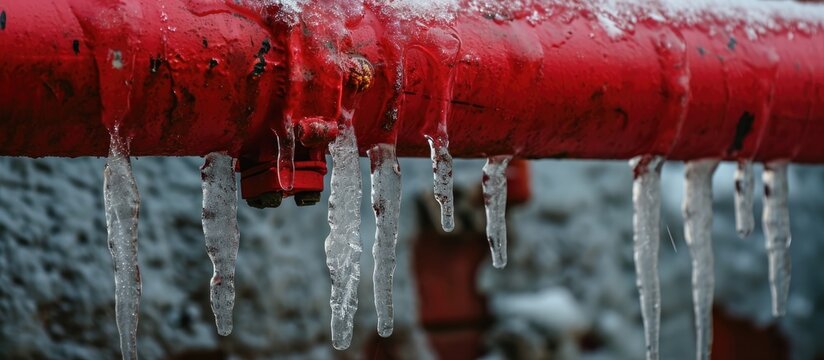Avoiding Frozen Pipes: Best Methods for Cold Weather
Avoiding Frozen Pipes: Best Methods for Cold Weather
Blog Article
In this article below you can find a good deal of quality facts pertaining to How To Avoid Freezing Pipes.

Cold weather can ruin your pipes, particularly by freezing pipes. Here's exactly how to stop it from taking place and what to do if it does.
Intro
As temperature levels decline, the risk of icy pipes increases, possibly resulting in costly repair work and water damage. Recognizing just how to stop frozen pipelines is vital for homeowners in cool environments.
Avoidance Tips
Protecting vulnerable pipes
Cover pipelines in insulation sleeves or make use of warm tape to secure them from freezing temperatures. Focus on pipelines in unheated or external locations of the home.
Heating strategies
Maintain indoor rooms properly heated up, specifically locations with plumbing. Open up cupboard doors to allow cozy air to distribute around pipes under sinks.
Just how to recognize frozen pipes
Seek lowered water flow from taps, unusual smells or sounds from pipes, and noticeable frost on exposed pipelines.
Long-Term Solutions
Architectural adjustments
Take into consideration rerouting pipelines far from outside wall surfaces or unheated locations. Include additional insulation to attic rooms, basements, and crawl spaces.
Updating insulation
Invest in premium insulation for pipelines, attic rooms, and walls. Proper insulation helps keep constant temperature levels and decreases the threat of frozen pipelines.
Safeguarding Outdoor Plumbing
Yard hoses and outdoor faucets
Detach and drain pipes yard pipes before winter. Mount frost-proof faucets or cover exterior faucets with protected caps.
Understanding Icy Pipes
What triggers pipelines to ice up?
Pipelines freeze when exposed to temperature levels below 32 ° F (0 ° C) for expanded periods. As water inside the pipes freezes, it expands, putting pressure on the pipeline wall surfaces and potentially creating them to burst.
Threats and damages
Frozen pipelines can result in water system disturbances, residential or commercial property damages, and expensive repair work. Ruptured pipes can flood homes and create substantial architectural damages.
Signs of Frozen Piping
Determining frozen pipelines early can avoid them from rupturing.
What to Do If Your Pipes Freeze
Immediate activities to take
If you think frozen pipes, maintain taps open to relieve pressure as the ice thaws. Use a hairdryer or towels soaked in hot water to thaw pipelines slowly.
Final thought
Avoiding icy pipelines requires positive steps and quick responses. By recognizing the reasons, indicators, and safety nets, property owners can safeguard their pipes throughout cold weather.
6 Proven Ways to Prevent Frozen Pipes and Protect Your Home
Disconnect and Drain Garden Hoses
Before winter arrives, start by disconnecting your garden hoses and draining any remaining water. Close the shut-off valves that supply outdoor hose bibs and leave the outdoor faucet open to allow any residual water to drain. For extra protection, consider using faucet covers throughout the colder months. It’s also important to drain water from any sprinkler supply lines following the manufacturer’s directions.
Insulate Exposed Pipes
Insulating your pipes is an effective way to prevent freezing. Pipe insulation is readily available at home improvement stores and is relatively inexpensive. Pay close attention to pipes in unheated areas such as the attic, basement, crawl spaces, or garage. Apply foam insulation generously to create a buffer against the cold. You can also wrap your pipes in heat tape or thermostat-controlled heat cables for added warmth.
Seal Air Leaks
Inspect your home for any cracks or openings that could let in cold air. Seal any holes around the piping in interior or exterior walls, as well as the sill plates where your home rests on its foundation. Additionally, make sure to keep your garage door closed unless you’re entering or exiting. Leaving it open creates a significant air leak that can lead to frozen pipes.
Allow Warm Air Circulation
During cold snaps, it’s essential to allow warm air to circulate evenly throughout your home. Leave interior doors ajar to promote better airflow. Open kitchen and bathroom cabinets to help distribute heat consistently around the rooms. If you have small children or pets, be sure to remove any household chemicals or potentially harmful cleaners from open cabinets for safety.
Let Faucets Drip
A small trickle of water can make a big difference in preventing ice formation inside your pipes. When temperatures drop significantly, start a drip of water from all faucets served by exposed pipes. This continuous flow helps prevent the water from freezing. Additionally, running a few faucets slightly can relieve pressure inside the pipes, reducing the chances of a rupture if the water inside does freeze.
https://choateshvac.com/6-proven-ways-to-prevent-frozen-pipes-and-protect-your-home/

Hopefully you enjoyed reading our excerpt about Helpful Tips to Prevent Frozen Pipes this Winter. Thank you for spending some time to read our blog. Please take the opportunity to distribute this blog entry if you liked it. Thank you for going through it.
Call Today Report this page